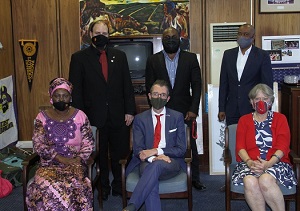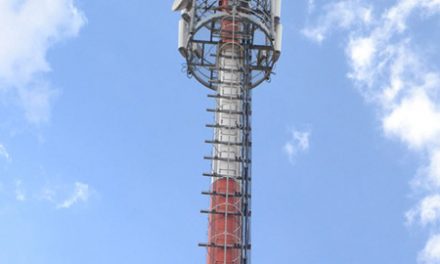
Radio telescope that can detect millimetre wavelength radiation to be hosted in Namibia

Namibia is poised to remain a significant location for space research as the country is set to host the first radio telescope in Africa that can detect millimetre wavelength radiation.
This development has set in motion the start of the Africa Millimetre Telescope (AMT) project in Namibia which aims to realise a radio telescope in the country.
The AMT will be the first radio telescope in Africa that is sensitive to millimetre wavelength radiation. It is part of a large collaborative project between Radboud University, the University of Namibia (UNAM) and various international partners.
The main goal of the project is to expand the telescope network of the Event Horizon Telescope with a radio telescope in Namibia.
“The addition of the AMT to the EHT network will increase the number of connections between the telescopes, thus allowing for better images and videos to be taken of the black hole at the centre of our galaxy. This will enable us to further test our theories on black holes and understand how they generate gigantic amounts of energy,” said Professor Heino Falcke, Principal Investigator of the project, who initiated it together with UNAM’s Professor Michael Backes.
The AMT will also work as a stand-alone telescope; the only one of its kind in all of Africa. The telescope can monitor variations in the brightness of small and large black holes – which it will also do in collaboration with optical telescopes and gamma-ray telescopes such as H.E.S.S. in Namibia and the planned CTA in Chile.
“We can understand astrophysical objects such as black holes best when we observe them at the same time with different types of telescopes. Hence, the proximity of H.E.S.S. and the AMT is ideally suited to study the Universe, even more so, considering also the close-by telescopes in South Africa: SALT in the optical and MeerKAT in the radio regime,” said Backes, Co-PI of the AMT and Namibia’s group leader for H.E.S.S.
The telescope, which will have a diameter of 15 metres, will be built according to a tried-out design and will be equipped with the latest generation instruments. Similar telescopes have already been realised at the European Southern Observatory (ESO) in Chile and at the Institut de Radioastronomie Millimétrique (IRAM) on the Plateau de Bure in the French Alps. The AMT shall be powered in a sustainable manner, by using solar power, wind energy and possibly hydrogen.
Radboud University will guarantee 1 million euros per year, for the next ten years, to be used for the management and utilisation of the telescope, and participation in the Event Horizon Telescope.
The Radboud Radio Lab will carry out the technical side of the project, supported by UNAM’s School of Engineering.
In order to prepare the next generation of Namibians for the AMT, the project has its own education and outreach programme, co-lead by UNAM’s Dr Eli Kasai, which has an active collaboration with partners from the local industry. For example, the first Namibian PhD candidate in the AMT Fellowship Programme will start in January of 2022, and it is envisioned that from the summer of 2022 on, they will travel around Namibia visiting primary schools with a mobile planetarium.
“In many African communities, space is of symbolic significance. The AMT will function as a lighthouse project for the next generation of Namibian engineers and scientists in general. In particular, it provides UNAM with the unique opportunity to participate in progressive and international projects that can help science reach new heights,” said UNAM Vice-Chancellor, Professor Kenneth Matengu.













































